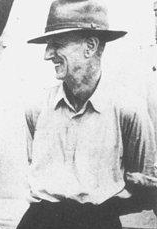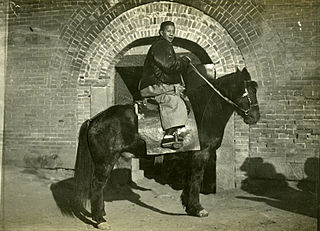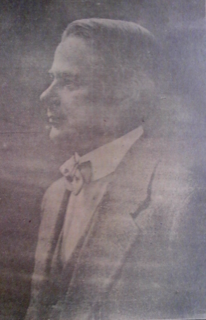
The Governor of Hong Kong was the representative in Hong Kong of the British Crown from 1843 to 1997. In this capacity, the governor was president of the Executive Council and Commander-in-Chief of the British Forces Overseas Hong Kong. The governor's roles were defined in the Hong Kong Letters Patent and Royal Instructions. Upon the end of British rule and the transfer of Hong Kong to the People's Republic of China in 1997, most of the civil functions of this office went to the Chief Executive of Hong Kong, and military functions went to the Commander of the People's Liberation Army Hong Kong Garrison.

The Battle of Hong Kong, also known as the Defence of Hong Kong and the Fall of Hong Kong, was one of the first battles of the Pacific War in World War II. On the same morning as the attack on Pearl Harbor, forces of the Empire of Japan attacked the British Crown colony of Hong Kong. The attack was in violation of international law as Japan had not declared war against the British Empire. The Hong Kong garrison consisted of British, Indian and Canadian units besides Chinese soldiers and conscripts from both within and outside Hong Kong.

Sir Franklin Charles Gimson was a British colonial administrator, who served in Ceylon from 1914 to 1941, and later as Colonial Secretary of Hong Kong and Governor of Singapore.
Hong Kong has a long-established South Asian population. As of the 2016 by-census, there were at least 44,744 persons of South Asian descent in Hong Kong. Many trace their roots in Hong Kong as far back as when most of the Indian subcontinent was still under British colonial rule, and as a legacy of the British Empire, their nationality issues remain largely unsettled. However, recently an increasing number of them have acquired Chinese nationality.
Dhun Jehangir Ruttonjee was a leader of the Indian community in Hong Kong. He was chairman of the Hong Kong Anti-Tuberculosis and Thoracic Diseases Association [zh] and a Legislative Councillor.

Stanley Military Cemetery is a cemetery located near St. Stephen's Beach in Stanley, Hong Kong. Along with the larger Hong Kong Cemetery, it is one of two military cemeteries of the early colonial era, used for the burials of the members of the garrison and their families between 1841 and 1866. There were no further burials here until World War II (1939–1945).
The Hong Kong Sports Institute is a sports institute located in Sha Tin, New Territories, Hong Kong. It is mandated to provide training to athletes, and also offers academic qualification in the field of sports training. The institute sponsors elite athletes and trains them as full-time employees, based on their talent and potential. The campus is located on reclaimed land on the bank of the Shing Mun River, next to the Sha Tin Racecourse.

Christopher Birdwood Roussel Sargent was a schoolmaster, missionary, and bishop of the Anglican Church.

Arthur de Carle Sowerby was British naturalist, explorer, writer, and publisher in China. His father was Arthur Sowerby.
Argyle Street Camp was a Japanese World War II Prisoner-of-war camp in Kowloon, Hong Kong, which primarily held officer prisoners. Built by the Hong Kong government as a refugee camp before the war as North Point POW Camp, it began life as a POW camp soon after Kowlon and the New Territories were abandoned to the Japanese.
Prof Walter Brown FRSE was a Scottish mathematician and engineer.

Sir Havilland Walter de Sausmarez, 1st Baronet was a judge of various British colonial or consular courts in Africa and Asia, the Ottoman Empire and China. His last judicial position before retirement was as Chief Judge of the British Supreme Court for China. He later served as Bailiff of Guernsey.

Sir Alasdair Duncan Atholl MacGregor KC was a British lawyer and judge. He served as Attorney General in a number of British colonies in the early 20th Century. He was Chief Justice of Hong Kong from 1933 to 1945.

Sir Chaloner Grenville Alabaster, OBE, QC (1880–1958) was a British lawyer who served as Attorney General of Hong Kong in the 1930s.

Sir Vandeleur Molyneux Grayburn was the chief manager of the Hongkong and Shanghai Banking Corporation from 1930 to 1943. He was the most powerful financier in the Far East in the 1930s, and took an important role in establishing Hong Kong dollar as the official currency of the colony. During the Japanese occupation of Hong Kong in World War II, Grayburn was arrested for providing monetary and logistics aid to military prisoners and bank employees held hostage, imprisoned, and later died at Stanley Prison.

Andrew Lusk Shields was a Scottish businessman and politician in Hong Kong. He died as a prisoner of war following the surrender of Hong Kong in 1941.
Herbert William Bird was a British architect and member of the Legislative Council of Hong Kong.

Anna May Waters was a Canadian nurse who served in World War II. Taken as a prisoner of war during the Japanese occupation of Hong Kong, she remained in captivity for fourteen months. Upon her release, Waters returned to Canada and was honored with the Royal Red Cross. After her service in Canada, Waters moved to Hawaii, spending over a decade nursing lepers at Molokai.














